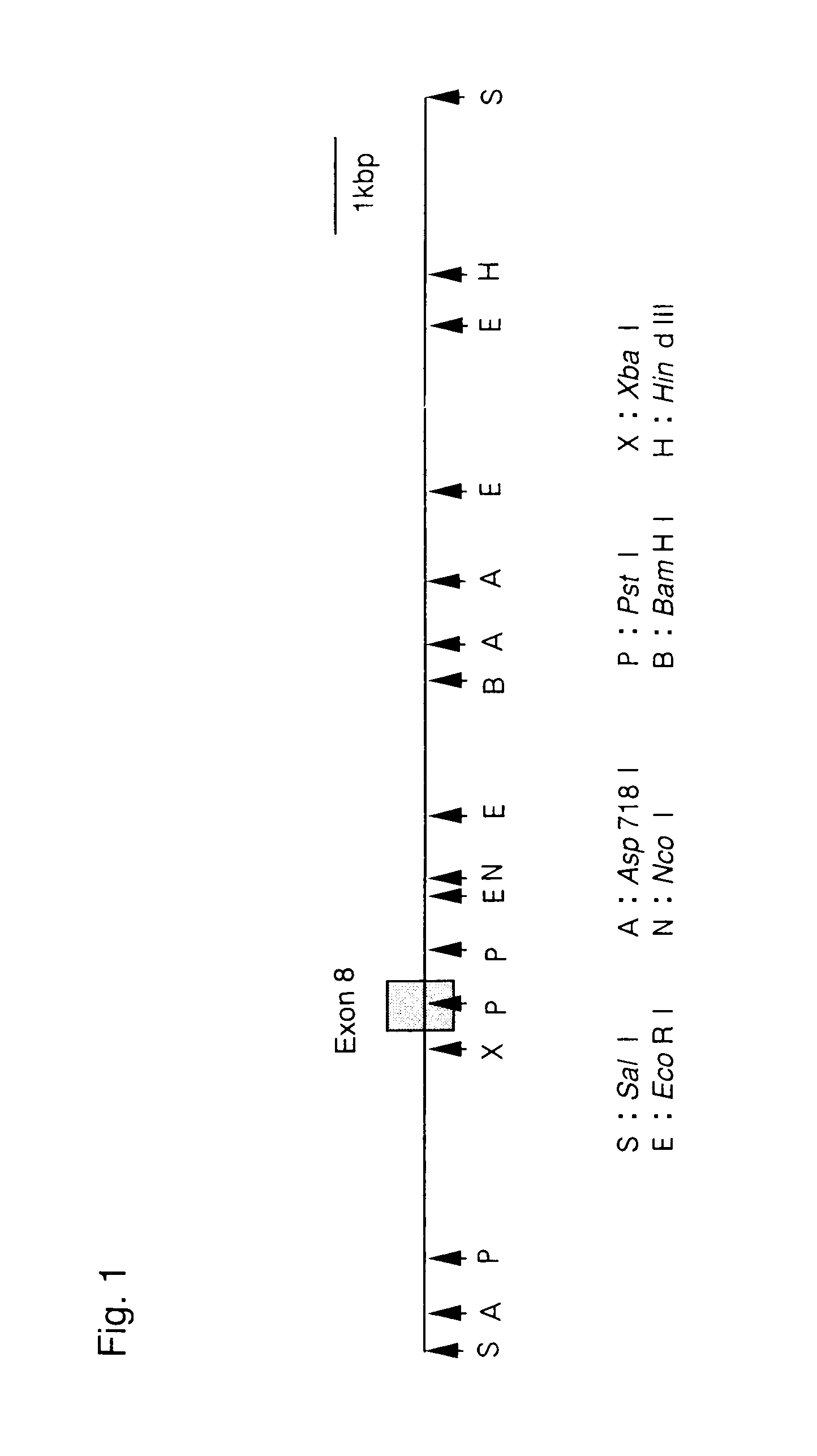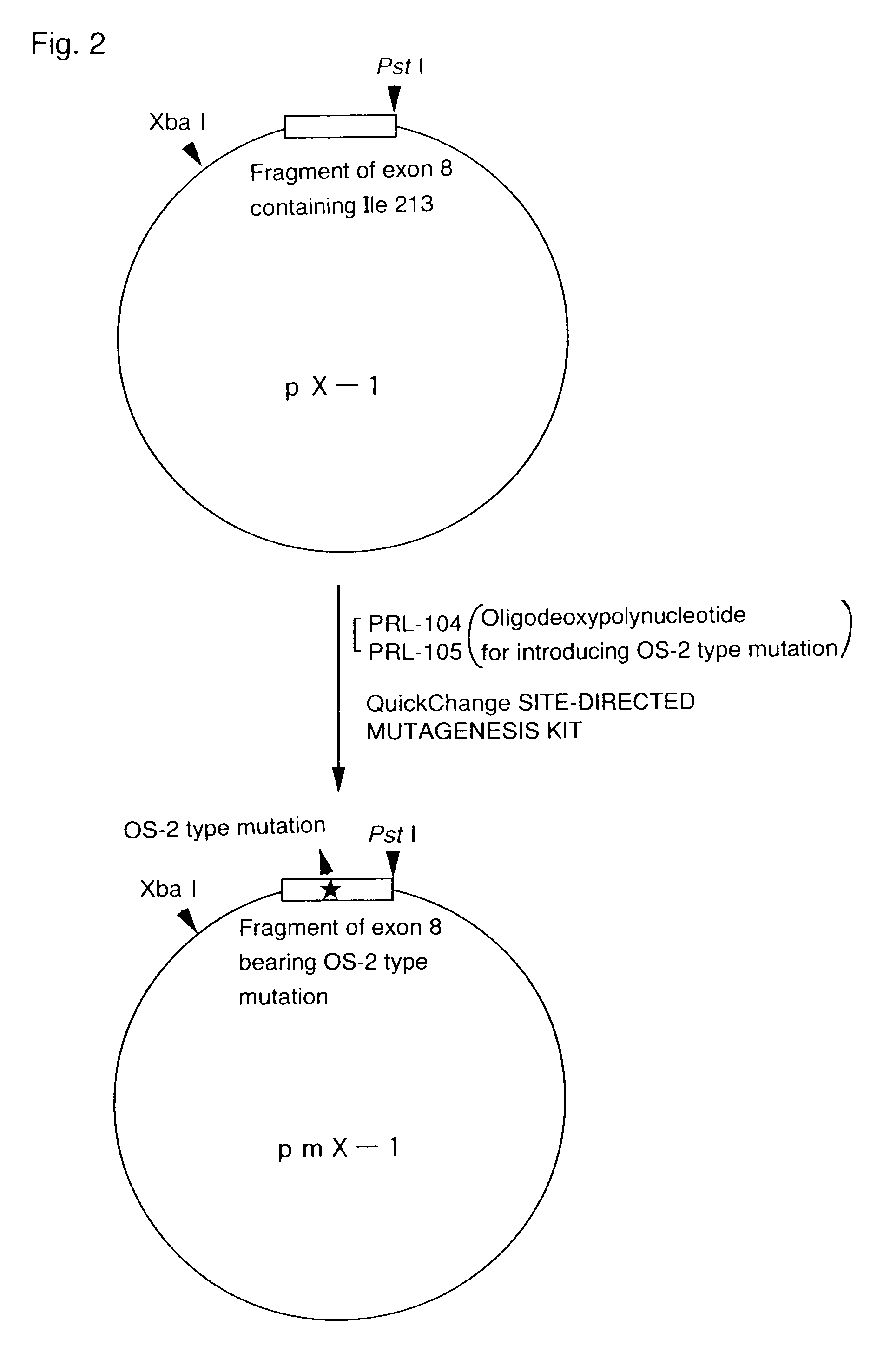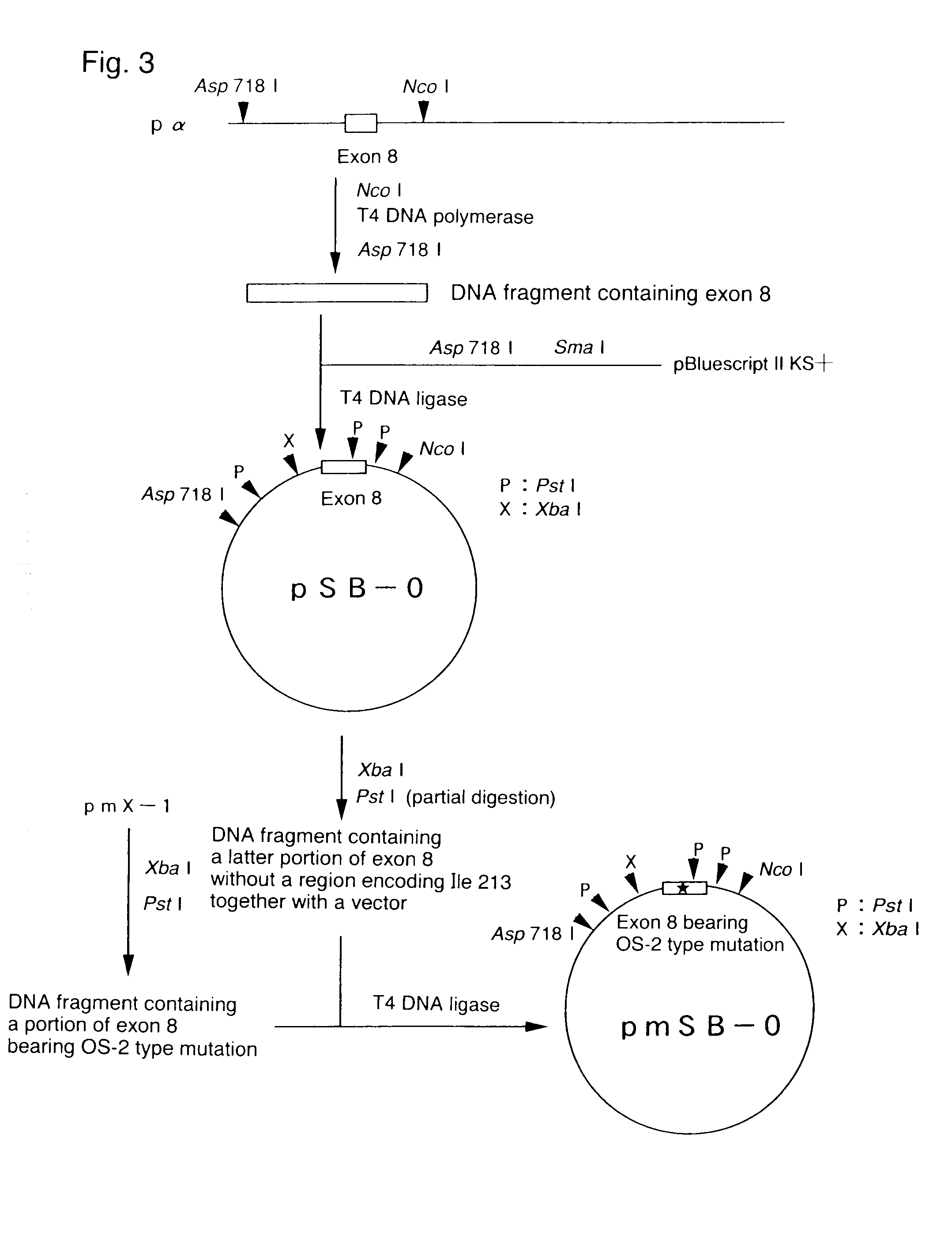Knockin gene-mutated mouse comprising a mutant presenilin-1 gene
a mouse and mutant technology, applied in the field of transgenic animals, can solve the problems of mouse brain histological study, inability to definitively treat alzheimer's disease, dementia symptoms,
- Summary
- Abstract
- Description
- Claims
- Application Information
AI Technical Summary
Benefits of technology
Problems solved by technology
Method used
Image
Examples
example 1
Cloning of Chromosomal DNA containing Exon 8 of Mouse Presenilin-1 (PS-1) Gene
[0094]To construct a probe for isolating a chromosomal DNA containing exon 8 of the mouse PS-1 gene, the following two oligodeoxynucleotides were synthesized:[0095]PR-8-U: 5′-GGAATTTTGGTGTGGTCGGGATGAT-3′ (SEQ ID NO: 5) (25-mer)[0096]PR-8-L: 5′-GGTCCATTCGGGGAGGTACTTGA-3′ (SEQ ID NO: 6) (23-mer)
[0097]PCR was carried out by using these two oligodeoxynucleotides as PCR primers and DNA extracted from 129 SVJ mouse genomic library (Stratagene) to obtain amplified DNA fragment of approximately 130 bp. The fragment was then labeled by random priming method in the presence of 32P-dCTP and then used as probes for screening of the 129 SVJ mouse genomic library. The resulting positive phage clones were examined and confirmed that they carried the desired chromosomal DNA including exon 8 of the mouse PS-1 gene. The cloned chromosomal DNA was designated as Pα and subjected to restriction mapping (FIG. 1).
example 2
Construction of Plasmid for Introducing Mutation
[0098]DNA was extracted from the cloned phage carrying Pα and cleaved with Sal I, and then subjected to electrophoresis on 1.0% agarose gel to collect Pα. After the cleavage with Pst I and Xba I, the product was subjected to electrophoresis on 1% agarose gel to collect a DNA fragment of approximately 600 bp including a nucleotide sequence encoding isoleucine at position 213 of mouse PS-1. The resulting DNA fragment was designated as X-1. X-1 was ligated using T4 ligase to the plasmid pBluescript II KS+ (Stratagene) which was cleaved beforehand with PstI and Xba I, and then used to transform Escherichia coli to obtain plasmid pX-1.
example 3
Introduction of OS-2 Type Mutation
[0099]An OS-2 type mutation and a Sau3A I restriction site were newly introduced into the plasmid pX-1 using the following two oligodeoxynucleotides PRL-104 and PRL-105. Both PRL-104 and PRL-105 were 36-mers and complementary to each other:[0100]PRL-104: 5′-TGTGGTCGGGA TGATC* GCCA C CCACTGGAAAGGCCC-3′ (SEQ ID NO: 7)[0101]PRL-105: 5′-GGGCCTTTCCAGTGG G TGGCG* ATCATCCCGACCACA-3′ (SEQ ID NO: 8)
[0102](The underlined base is changed from a wild-type base to introduce the OS-2 type mutation, i.e., T for PRL-104 and A for PRL-105 in wild types. Asterisked bases are changed from wild-type bases to introduce the Sau3AI site, i.e., T for PRL-104 and A for PRL-105 in wild types.)
[0103]The introduction of the mutation was carried out by using QUICK CHANGE SITE-DIRECTED MUTAGENESIS KIT (Strategene) according to the manufacturer's protocols. Sequencing of the product verified that the mutation was correctly introduced. X-1 bearing the mutation was designated as mX...
PUM
| Property | Measurement | Unit |
|---|---|---|
| Dynamic viscosity | aaaaa | aaaaa |
| Time | aaaaa | aaaaa |
Abstract
Description
Claims
Application Information
 Login to View More
Login to View More - R&D
- Intellectual Property
- Life Sciences
- Materials
- Tech Scout
- Unparalleled Data Quality
- Higher Quality Content
- 60% Fewer Hallucinations
Browse by: Latest US Patents, China's latest patents, Technical Efficacy Thesaurus, Application Domain, Technology Topic, Popular Technical Reports.
© 2025 PatSnap. All rights reserved.Legal|Privacy policy|Modern Slavery Act Transparency Statement|Sitemap|About US| Contact US: help@patsnap.com



